Baba au rhum is a delicious yeasted sponge cake soaked in a boozy rum syrup. While this beloved pastry is well-known in French patisseries, alongside canelès, macarons, and mille feuille, it might seem humble and less elegant. I beg you to think again! This is one of my favorite desserts. The magical combination of buttery, fluffy cake, boozy syrup, and a rich whipped cream transports me right back to the streets of Paris with just one bite.
This rum baba recipe does take some time and effort, but with the right tools and prep, you’ll be able to impress your guests with a delightful dessert. I tested this recipe with the home baker in mind, and give you plenty of tips and tricks for making these flawlessly at home!
Table of Contents
What Is Rum Baba?
Rum baba, or Baba au rhum, is a classic French dessert made from a yeasted sponge cake soaked in a boozy rum syrup. While this pastry was created in a French patisserie, the baba au rhum was inspired by Polish babka. The babka we know today is a braided loaf swirled with filling, but it originated as a sweet, yeasted cake, and the dough for a rum baba is made in a similar fashion.
The pastry originated in Alsace in the early 18th century, a region known for its wines. Originally, these cork-shaped cakes were soaked in a wine syrup and known as baba au vin. French pâtissier Nicholas Stohrer—of the famed Parisian Stohrer’s Pâtisserie— eventually put his own spin on the cake by soaking them in rum, and baba au rhum was born. French-trained pastry chefs eventually brought the recipe to Naples, Italy in the 19th century, and it has become deeply embedded in the Neapolitan culinary tradition as well, adding local ingredients like citrus zest or limoncello to create baba napoletano.
Key Ingredients
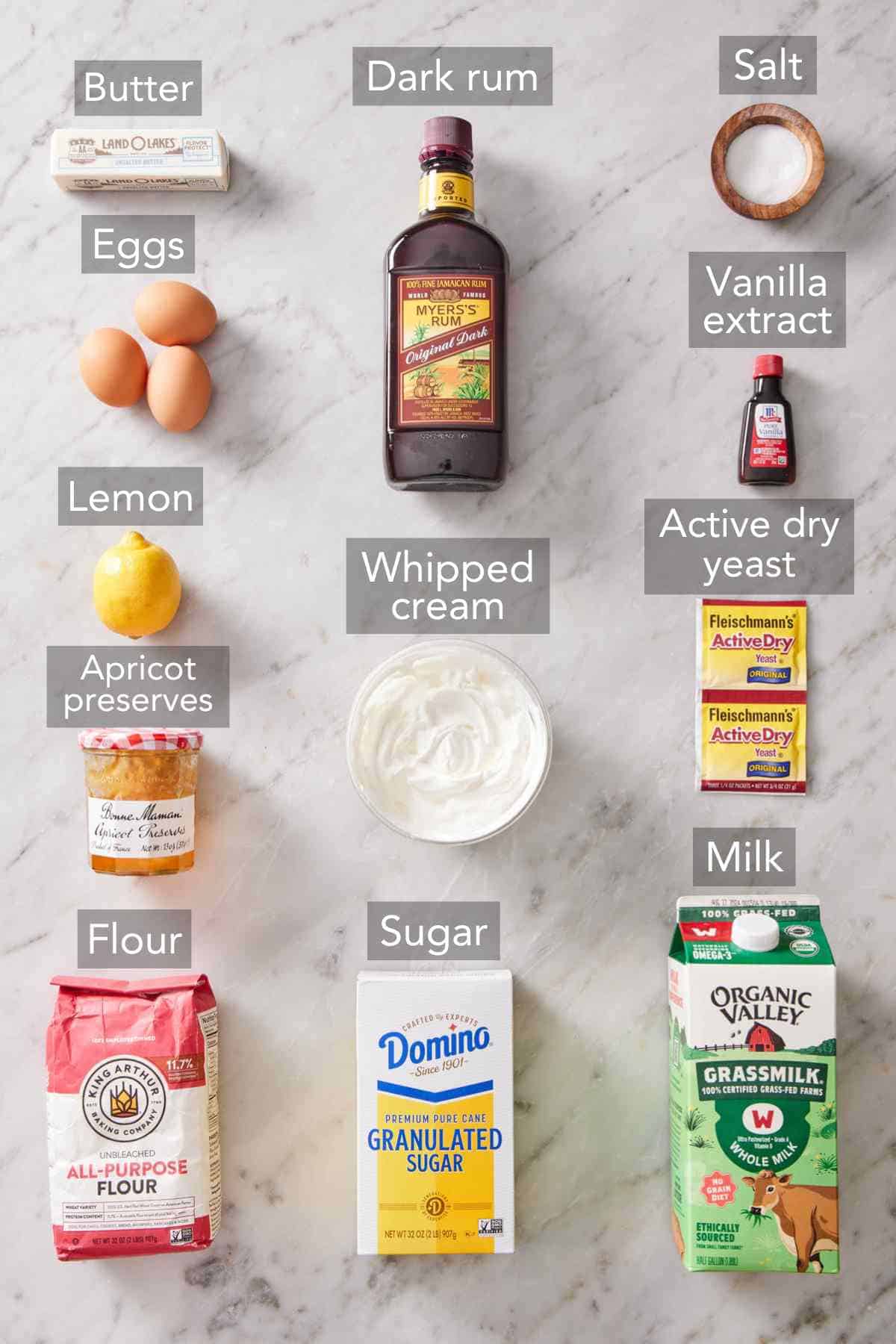
Here are the main ingredients that are essential to making rum babas! You can find the full list of ingredients and measurements in the recipe card below.
Active dry yeast — unlike “instant yeast” or “pizza yeast,” you’ll need to bloom active dry yeast to make sure it’s alive before mixing the dough. Instant and active dry yeast aren’t interchangeable, so make sure you have the correct type before starting the recipe. If the yeast mixture doesn’t foam after 10 minutes, start again with a fresh packet.
Warm milk — “warm” is the operative word here. Aim for around 100 to 110°F to create a cozy environment for the yeast to thrive. Any hotter and you’ll risk killing the yeast. Any colder could keep the yeast dormant.
All-purpose flour — plain white flour is all you need for tender cakes. For a loftier rise, you can swap in bread flour instead. The higher protein content in the bread flour can produce more gluten, thus allowing the dough to rise a bit higher. The cakes will be slightly chewier than spongy, so it’s up to your preference!
Eggs and butter — these two ingredients enrich the dough, creating a rich flavor in the sponge cakes. I use unsalted butter and add salt separately since the salt levels in salted butter can vary greatly between brands.
Dark rum — this is the star of our soaking syrup, so grab a high-quality bottle. If you don’t have dark rum, an aged rum is a great substitute. Or for more flavor, use a spiced rum!
Apricot preserves — after soaking in the rum simple syrup, we brush on these preserves for an extra layer of flavor and a beautiful shine. Plus, they help lock in the moisture from the soaking syrup.
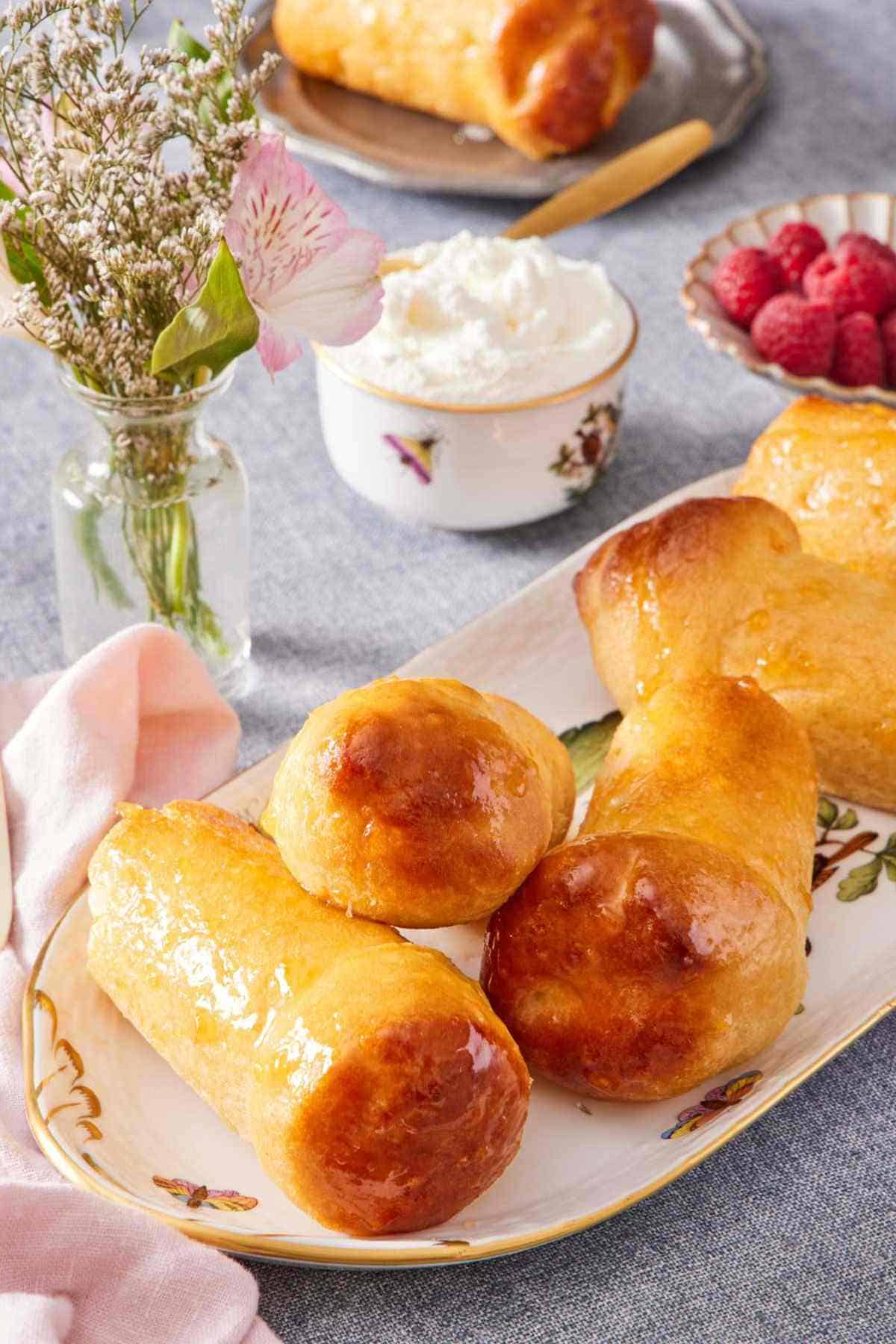
What Type Of Mold Should I Use?
You will need 3-ounce rum baba molds. You can use either metal or silicone, both of which are readily available online! The molds can be tall or short. So long as they are 3 ounces in volume, either will work, and the bake time will be approximately the same. Keep in mind that the mold material, height, and width will bake up with different heights and shapes, which you can see in the image below.
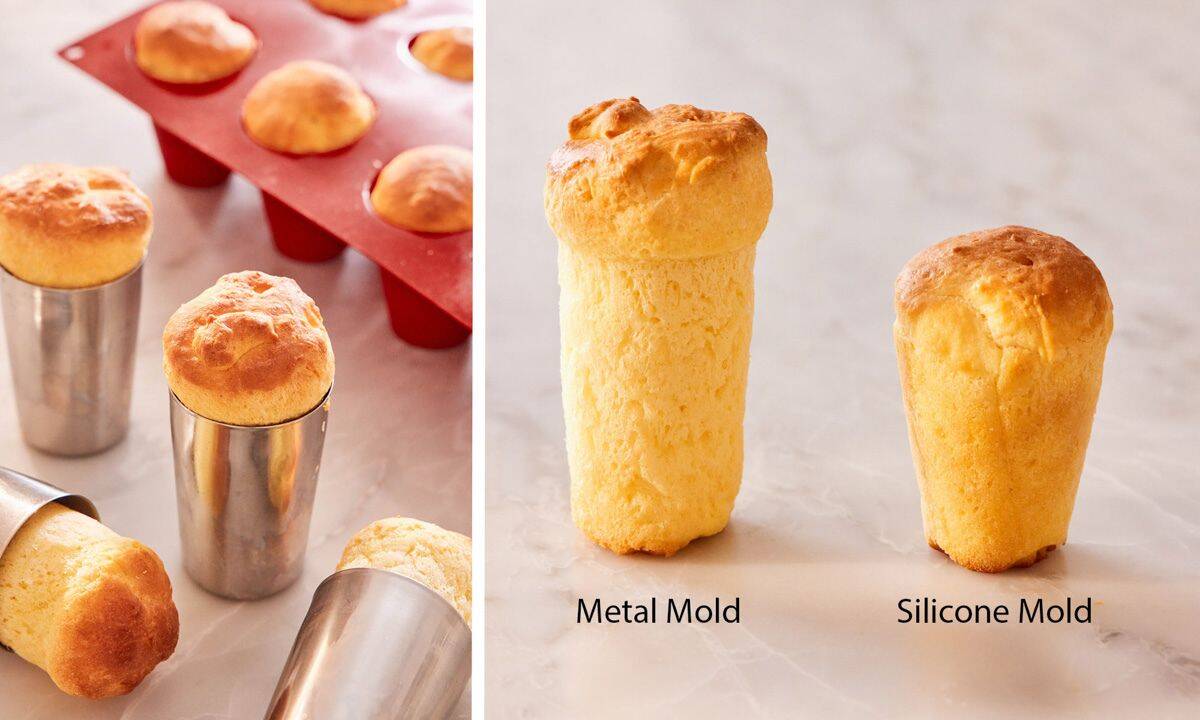
Can I Make This Without Molds?
If you don’t have baba molds, make this variation in a bundt pan! After the first rise is complete, grease a 12-cup bundt pan (10 inches in diameter) with baking spray or softened butter and flour. (Make sure to get all the nooks and crannies!) Arrange the dough in an even layer around the base of the pan. Cover and let it rise for 20 to 30 minutes or until it rises up 1 inch in the pan. Uncover and bake at 375°F for 20 minutes.
Let the bundt cake cool for 10 minutes in the pan, then unmold and cool completely to room temperature. Prepare the rum syrup as directed in a large pot that is at least the width of the Bundt cake. Soak the cake in the syrup directly in the pot for 6 minutes, flipping once halfway through. Transfer it to a wire rack set over a sheet tray and drizzle a few extra spoonfuls of the rum syrup over top. Brush with the apricot preserve mixture. Slice and serve as directed in step 12.
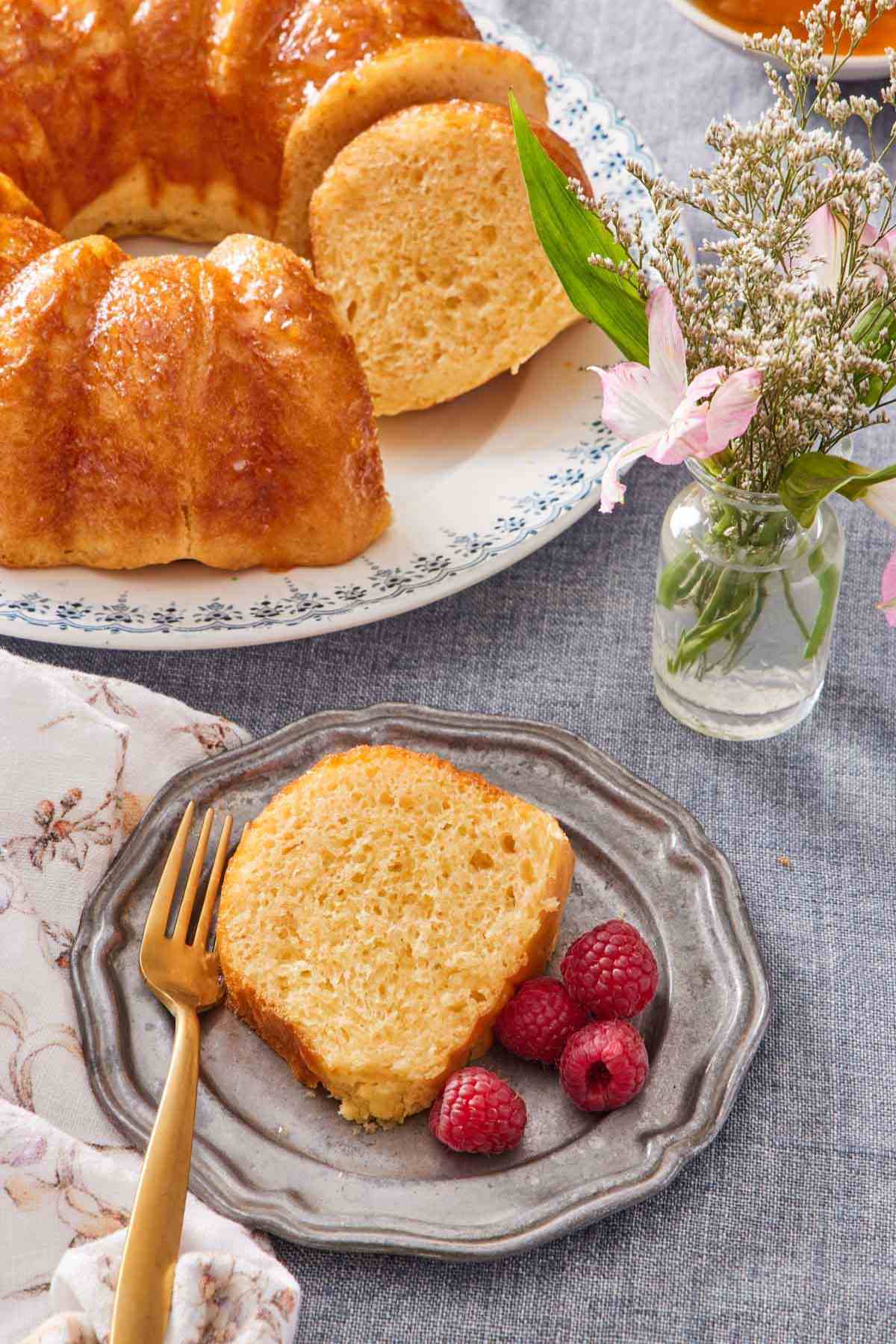
Pro Tips For Making This Recipe
The dough will feel like a cross between bread dough and cake batter. Rum Baba dough is very soft and sticky. It’s best to knead it in a stand mixer with a dough hook, as you need to give it plenty of time for the gluten to form. To make it by hand, I recommend stirring it vigorously in a mixing bowl with a wooden spoon or silicone spatula rather than kneading by hand on a surface, as it gets very messy very quickly. Also, note that mixing it by hand takes longer than it does with a stand mixer, so you should consider having a sous chef on hand to give you rest breaks!
Add dried fruit to the batter! If you’d like to add raisins or currants, combine ½ cup of dried fruit with ½ cup of boiling water. Let sit for about 15 minutes to plump up, then drain off any excess liquid and cool for 15 minutes. Mix them into the baba dough on low speed or with a silicone spatula by hand before the first rise.
Don’t overfill the molds. When you first add the dough, you might think the molds are full enough. But trust me, the yeast will cause the dough to expand quite a bit, so aim for just about half full.
Watch the dough, not the clock. When you’re working with yeasted recipes, especially doughs that are enriched with butter and eggs, there are many factors at play. The ambient temperature of the room you’re proofing it in, the temperature of the ingredients when you add them to the dough, how much yeast there is, and even your elevation. I give estimated times here, but these are flexible and meant to help guide you! Always look for the visual indicators to help you know when the dough has proofed enough.
How To Make Rum Baba
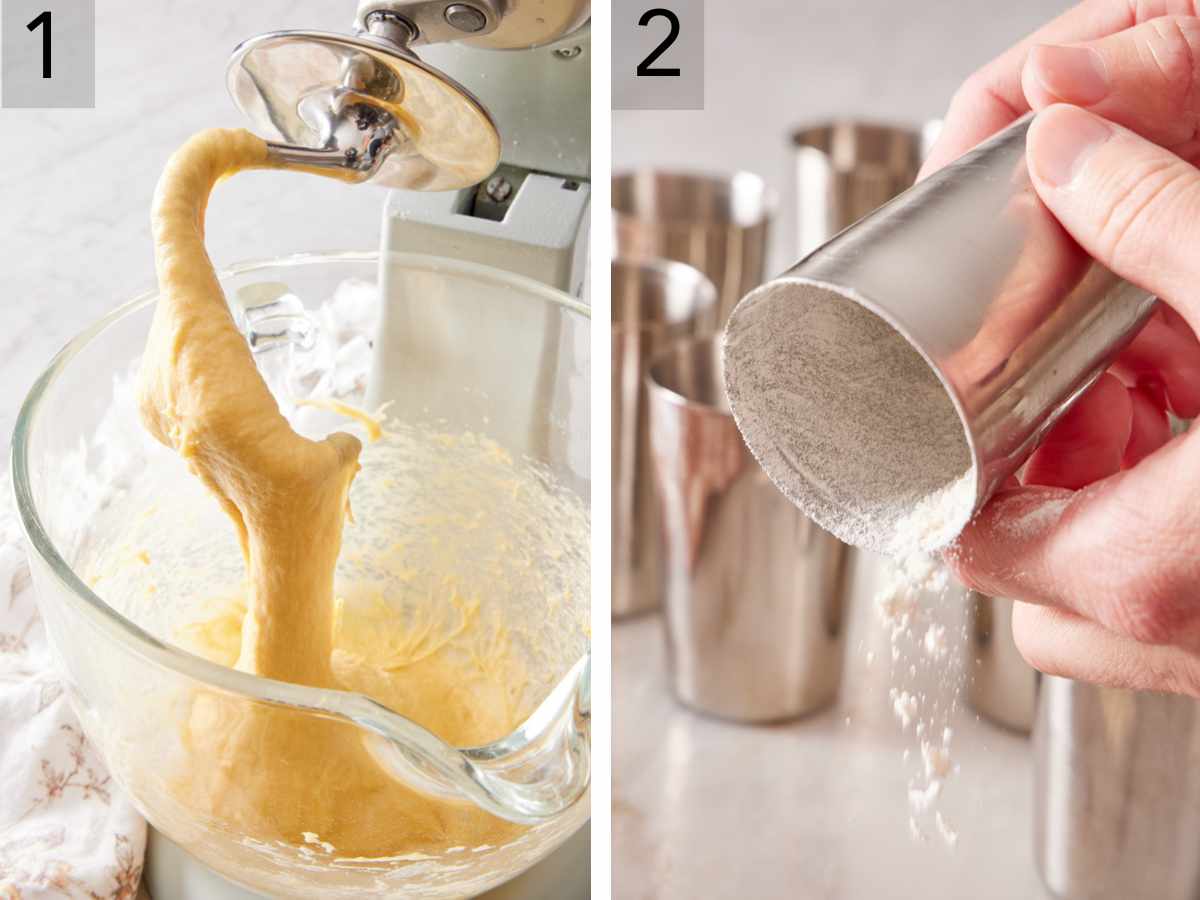
1. In a large bowl of a stand mixer, combine yeast, warm milk, and 1 teaspoon sugar. Let the yeast mixture sit until foamy, then add eggs, cooled butter, and dry ingredients. Stir to form a shaggy dough, then mix on medium-low speed with the dough hook until the dough is smooth and pulling away from the sides. (Some sticking on the bottom of the bowl is normal.) Place the dough in a greased bowl, cover, and let rise in a warm place until doubled in size.
2. Once the dough has risen, grease 12 (3-oz) baba molds with baking spray or butter and flour.
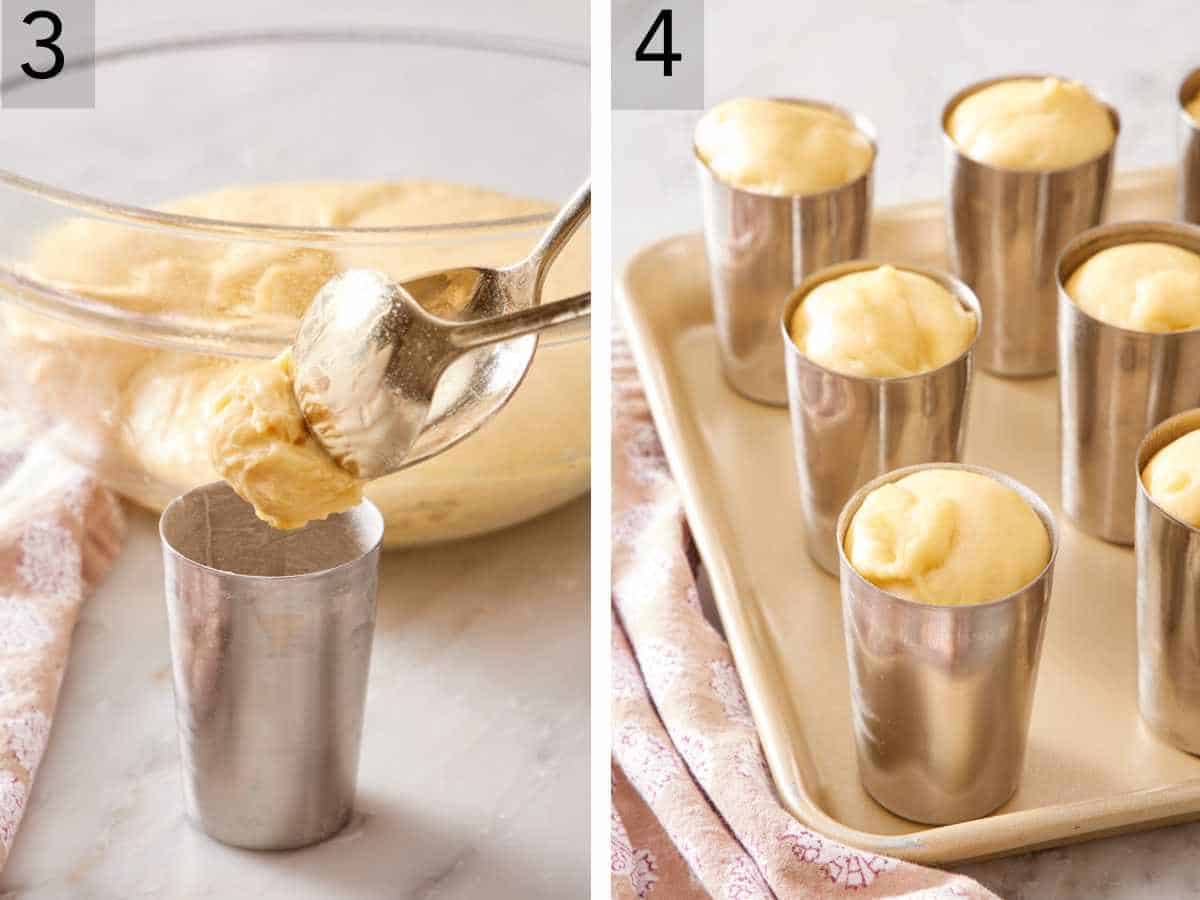
3. Using greased spoons, scoop enough of the dough to fill each mold halfway.
4. Cover and let it rise until the dough reaches the top of each mold. Uncover and place the molds on a sheet tray. Bake for 12–15 minutes at 375ºF, until golden brown.
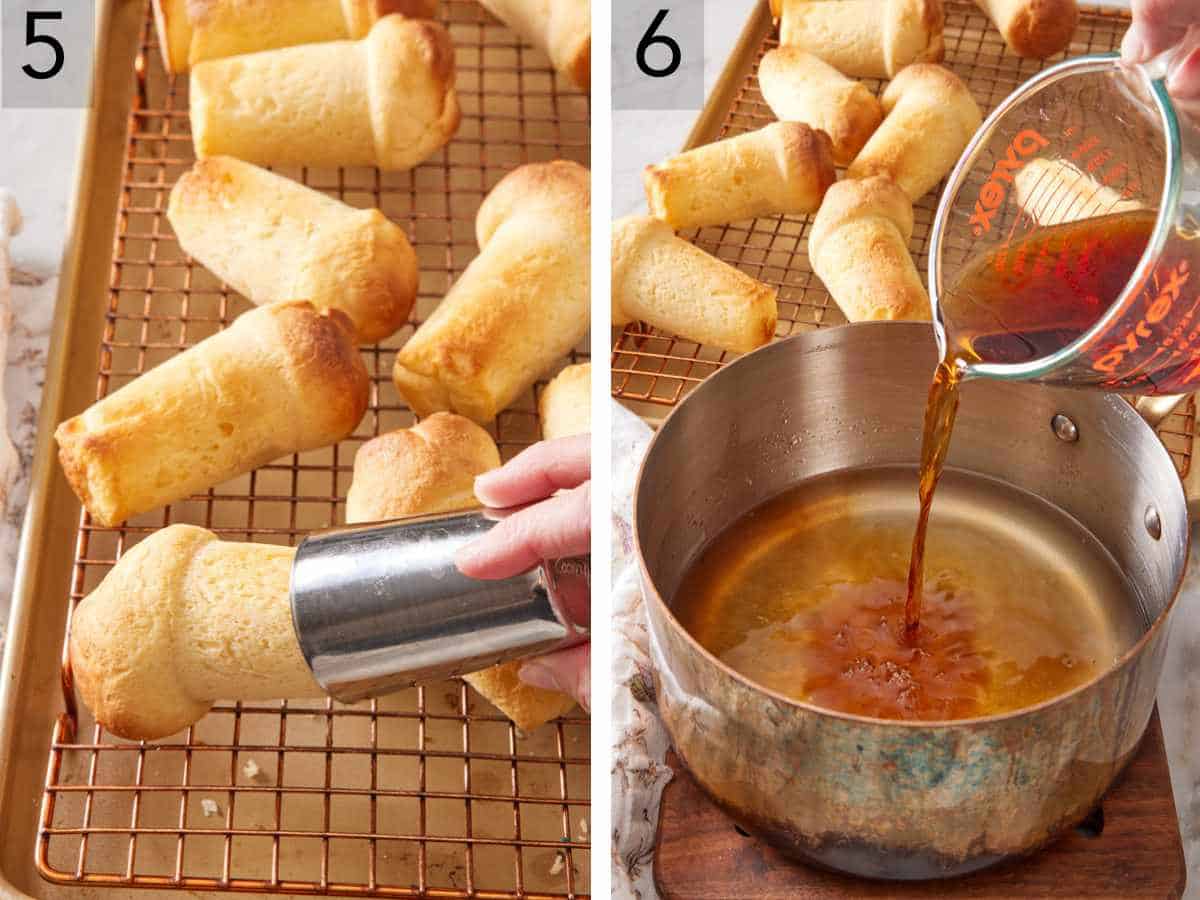
5. Cool the babas in the molds for 10 minutes, then unmold onto a wire rack.
6. While they cool, combine the sugar and water in a small saucepan over medium-high heat, whisking until dissolved. Remove from heat and let cool 15 minutes. Stir in the rum, lemon juice, and vanilla.
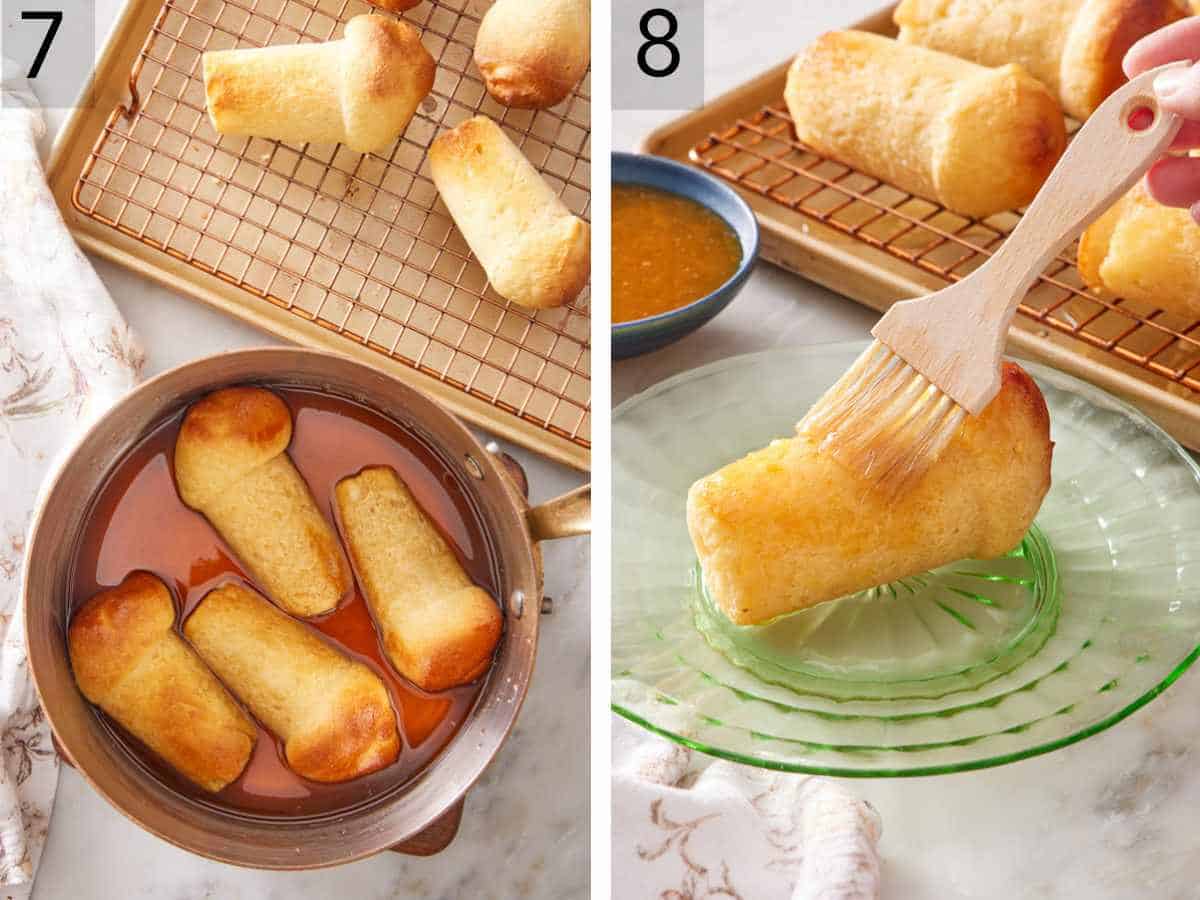
7. While the cakes are still warm, soak a few rum babas at a time in the syrup for 3–5 minutes, turning often, until fully saturated and they have puffed up a bit. Transfer them to a wire rack placed over a baking sheet.
8. Thin apricot preserves with water to make a glaze. Use a pastry brush to brush the glaze over the tops of the soaked babas. Serve each with whipped cream and a drizzle of extra rum syrup, if desired.

Rum Baba Recipe
Equipment
- 16 Baba molds, 3x2x3-inches (or about 3 ounces)
- Stand mixer with dough hook
Ingredients
For the Babas:
- 1 tablespoon active dry yeast
- ¼ cup warm milk (100 to 110°F) (60mL)
- 2 tablespoons granulated sugar divided
- 3 large eggs room temperature
- 5 tablespoons unsalted butter melted and cooled (70g)
- 2 cups all-purpose flour (240g)
- ½ teaspoon salt
For the Rum Syrup:
- 1½ cups granulated sugar (300g)
- ¾ cup dark rum (180mL)
- 3 tablespoons fresh lemon juice
- 1 tablespoon vanilla extract
To Serve:
- ½ cup apricot preserves (160g)
- 3 cups whipped cream
Instructions
For the Babas:
- In the bowl of a stand mixer fitted with a dough hook, combine the yeast, warm milk, and 1 teaspoon of sugar. Let sit for 5 to 10 minutes, or until the yeast is foamy.
- Add the eggs, cooled butter, flour, remaining 5 teaspoons of sugar, and salt. Stir with a silicone spatula to form a shaggy dough. Place on the stand mixer and mix on medium-low for 5 to 7 minutes until the dough is smooth and gathers around the hook. (It will begin to pull away from the sides of the bowl, but some of it may still stick.)
- Scrape down the sides and bottom of the bowl and transfer the dough to a greased bowl or large liquid measuring cup. Cover with plastic wrap or a damp kitchen towel and let rise for 35 to 45 minutes until doubled in size.
- Meanwhile, prepare 12 (3-ounce-sized) baba molds. Spray with nonstick baking spray or grease with softened butter and coat with flour, tapping out any excess.
- Using two greased spoons, scoop about 2 tablespoons (1½ ounces, 50g) of dough to fill each of the baba mold cavities half full.
- Cover with plastic wrap or a damp kitchen towel and let rise for about 20 minutes, until the dough doubles in size and reaches the top of the molds.
- Meanwhile, preheat the oven to 375°F. Place the molds on a sheet tray and bake for 12 to 15 minutes until golden brown on top and the internal temperature reaches 200°F.
- Let cool for 10 minutes in the pans, then unmold and let cool completely on a wire rack.
For the Syrup:
- While the babas are cooling, in a medium pot, combine the sugar with 1¾ cups (420mL) water. Cook over medium-high heat, whisking frequently until the sugar is completely dissolved. Remove from the heat and let cool slightly (about 15 minutes). Add the rum, lemon juice and vanilla extract and whisk to combine.
To Assemble:
- Once the babas are just warm, soak 4 to 5 at a time for about 3 to 5 minutes, turning frequently, until the rum syrup has soaked through to the center. (The babas should look visibly bigger, feel heavier and squishy). Transfer the soaked babas to a wire rack set over a sheet tray. Repeat until all of the babas are soaked. Reserve any remaining soaking liquid.
- In a medium bowl, whisk to combine the apricot preserves and 2 to 3 tablespoons of water to make a glaze.
- Plate one baba on each dessert plate or shallow bowl and brush the tops with the apricot glaze. Serve with whipped cream and an extra drizzle of the rum syrup.
Notes
- It’s important to soak the rum babas while they are warm. They will absorb the syrup well and more quickly this way.
- You can serve the rum babas while they are still warm or completely cool. Just keep in mind that if they are served warm, serve the whipped cream on the side to keep it from melting quickly.
Nutrition
How To Serve
Babas au rhum are lovely served plain with a generous dollop of whipped cream. You can also split them down the middle and use a piping bag to fill them with the whipped cream. (Note that when making the whipped cream, soft peaks are great for dolloping while firmer peaks are better for piping. Beat it according to how you plan to use it!) For an added finish, scatter some fresh fruit over the baba if you wish!
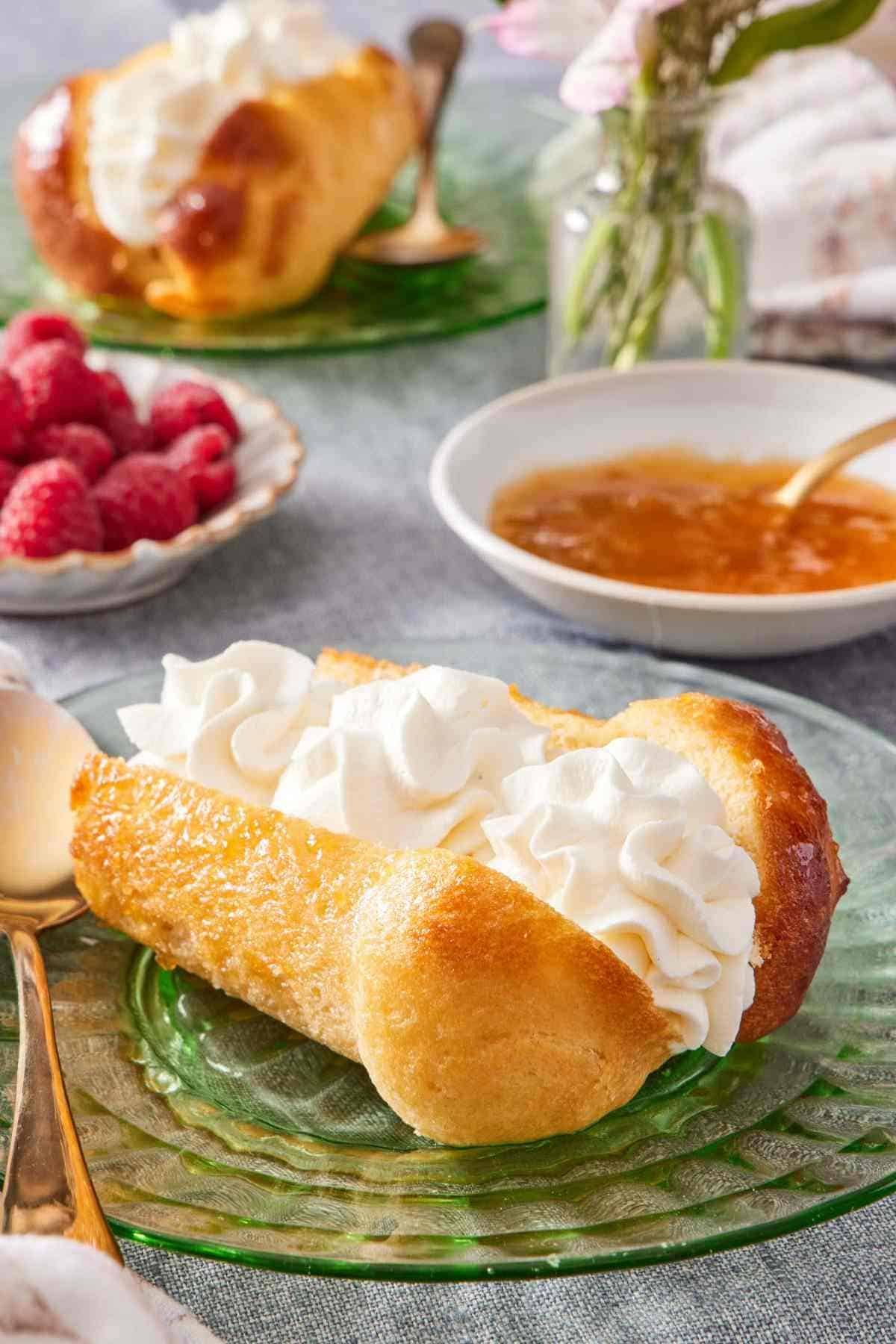
Frequently Asked Questions
Yes, you can make the babas up to one day ahead. Cool them completely to room temperature before soaking them in the rum syrup, then store them in an airtight container or a bowl covered tightly with cling film on the counter. Alternatively, wrap the individual (unsoaked) babas in plastic wrap, transfer to a freezer bag, remove as much air as possible, and freeze for up to 2 months. Defrost on the counter and soak them once defrosted.
To keep them fresh and moist, be sure to use an airtight container. Plain rum baba keeps well at room temperature for up to 2 days, or can be refrigerated for up to 5 days. Make sure to keep any extra whipped cream and extra syrup refrigerated, and refrigerate any babas au rhum filled with cream.
Absolutely! Trade the rum for limoncello or Grand Marnier for a citrusy, Italian-inspired twist, or use amaretto if you prefer the flavor of almonds. You can also use apple cider or water and replace 2 tablespoons of white sugar with brown sugar to avoid using alcohol. Try adding a splash of vanilla extract or rum flavoring to taste. You can also infuse the simple syrup with lemon zest or orange zest to add extra flavor.
If you’ve tried this Rum Baba (Baba au Rhum) recipe, then don’t forget to rate it and let me know how you got on in the comments below. I love hearing from you!






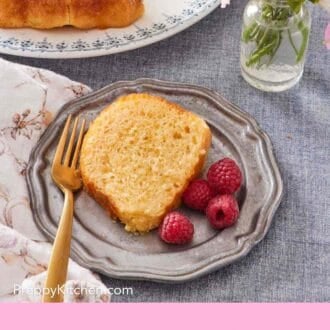


Leave a Reply